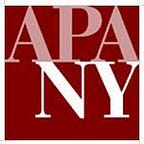In our back yards: What online crowd-resourcing can teach us about listening to communities
A few years back, there was a low rumble in the planning world as platforms like Mindmixer, ShareAbouts, and ChangeByUs arrived on the scene. These online tools were heavy with a potential that seemed to indicate a brave new world of community engagement divorced from the after-work, middle-school gym, NIMBY-dominated planning meeting. Maybe we could capture and share community feedback in a more productive way than with magic markers on giant sticky pads. And there was the bright possibility that not just community feedback, but community-generated ideas, would percolate up to decision makers who were brought to peer level by social tools, those great equalizers.
To some extent, these tools have indeed moved the needle towards inclusivity in municipalities that have chosen to engage in this new form of dialogue. They have not, for the most part, made this dialogue more civil or more productive as hoped; Internet comments about urban planning are, after all, still Internet comments.
Predictably, online engagement seems to be most fruitful when the range of outcomes is limited. For planners, polling participants on the most preferable of three designs leads to more actionable data than the empowering but nebulous “what do you want”? Crowd-sourced idea-generation in particular has been frustratingly disconnected from implementation, leading to the classic planning problem of overpromising and under-delivering. Same old story, better user interface.
As an urban planner and as a communications adviser for planning projects, I’ve often wrestled with how to understand the value of tech-based community engagement. Moving beyond the archaic and often excruciating top-down public meeting seems like a no-brainer, given that nearly all other processes of daily life are being “disrupted” by tech tools. But it seems far-fetched to buy into the promise of the crowd’s ability to self-select a workable course of action. NIMBYs are online, too.
Part of the solution may lie in scale: The increasing acceptance of street-scale tactical urbanism and other quick, cheap, informal urban design interventions reduce the pressure to get it right the first time around. The shift in project ownership that this re-scaling allows, from city agencies and other large institutions to communities themselves, can also ease the adversarial dynamic of top-down planning. And small, cheap interventions are easier to implement, reducing the lag between idea-generation and having something to show.
I now work for ioby.org, a startup crowd-resourcing (think crowdfunding plus resource-gathering) platform for small-scale projects that are largely led, supported, and funded by neighbors within a few blocks of the project. Many of the projects we support fall into the camp of informal or temporary urbanism. There are a lot of community garden projects, vacant lot activations, public murals, pedestrian-and-bike-infrastructure projects, and the like.
Most people who list projects with us are not planners or designers (although a few of our favorites have been led by “rogue planners” moonlighting as activists in their own neighborhoods). Many of our project leaders have lived in their neighborhoods for decades, and may have walked by the same vacant lot hundreds of times before deciding to take action to improve it. They know what’s needed and what works for their neighborhoods, and don’t need to wait around to offer feedback on someone else’s idea. They are able to use our online platform to not only post an idea, but to actually gather the resources needed to implement it.
Most impressive to me is that city governments are beginning to take notice of this faint but growing groundswell of neighborhood leaders funding, testing, and implementing ideas outside of the formal planning process. Even better, some of them are willing to allocate funding for ideas that align with citywide priorities such as urban greening or Vision Zero-type street safety goals. The mayor of Los Angeles recently announced $200,000 in match funding for ioby projects that help make the city’s streets safer and more vibrant. In a rather genius move, this mayor is leaving the planning and implementation up to community leaders who have the momentum, and then tallying their successes toward a citywide goal. Two birds, one stone.
It bears mention, of course, that a program like this one is no replacement for the long-term, large-scale, publicly-funded infrastructure projects that many of us spend years to get right, and from which communities undoubtedly benefit. However, we in the field should take notice: these may not be planner-generated ideas, but they are good ideas. Part of serving communities is knowing when to step back and allow communities to serve themselves. Tech tools may slowly revolutionize the way we engage with communities. But as planners, we should pay equal attention to what happens, online and offline, when we’re not in the room.
Katie Lorah leads ioby’s communications, storytelling, and all things creative. Her background is in non-profits and urban planning — she’s led communications for Friends of the High Line, has worked on coastal resiliency for the NYC Parks Department, and has consulted on strategy for early-stage social enterprise startups.
To learn more about ioby, online crowd-resourcing, and community engagement in the design process, you can register for and attend the APA/ASLA/AIA June Conference: Community Engagement in the Design Process, where Erin Barnes, Executive Director of ioby, will be a panelist. The conference is on Friday, June 12th, 8:30–5pm.
Voices of Urban Design is a discussion forum that is curated by the APA New York Metro Chapter’s Urban Design Committee. Posts are edited for clarity and length only; opinions and statements that appear in this blog are not endorsed by the American Planning Association nor its affiliates. We expect and encourage healthy debate!
